Did you know the National Cycle Network is almost 30 years old? And as it stretches across over 12,000 miles across the UK, it’s bound to include some history...
We’ve put together a list of some of the more interesting and oldest spots you can find along the Network when you’re next out and about.
Our staff and volunteers help to maintain, improve and develop routes, along with our supporters who help us to raise funds so this work can be done.
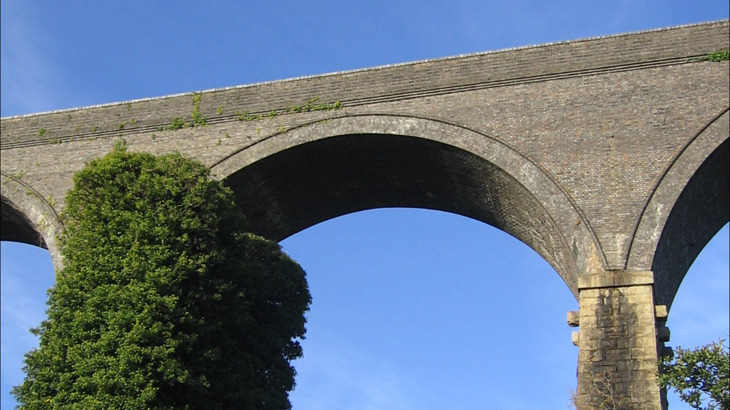
Ham Green Viaduct, Plymouth
Sustrans only owns about 2% of the Network and as it ages, more care and maintenance are needed. As custodians, it's our role to care for it, improve it and champion a long-term vision for its future.
Ham Green Viaducts, National Route 27, South Devon
Along the Plym Valley Cycle Path, you’ll find this stunning viaduct (along with five others) dating all the way back to the 1890s.
The viaducts here today replaced the original timber structures built in the 1850s. Serving as a railway, it made up part of the 13-mile South Devon and Tavistock Railway that connected Exeter and Plymouth until the track closed in 1962.
The famous Isambard Kingdom Brunel designed all six of the original timber viaducts along the Tavistock section of the line. He used continuous laminated beams that spanned the River Plym. In 1899, new stone piers were erected to support the original timber with seven support arches.
While most of the viaduct is part of the National Cycle Network a small section still operates as a heritage railway, making it a great spot to stop and explore.

Former East Coast Main Line Bridges
Former East Coast Main Line Bridges, National Route 65, south of York
Another remnant from the railway’s heyday are the overbridges that run along part of Route 65 on the way up to York.
The East Coast Main Line began in the 1840s spanning 393 miles of the east of England. These bridges were subsequently built in 1871 as part of the route. One of which formed part of Escrick Railway Station.
Coinciding with the electrification of the railway line, the bridges were largely rebuilt in the 1950s to accommodate this. Eventually, the East Coast Main Line was diverted in 1983 to avoid potential subsidence.
Today they can be found along National Cycle Network Route 65 as reminders of a time gone by.
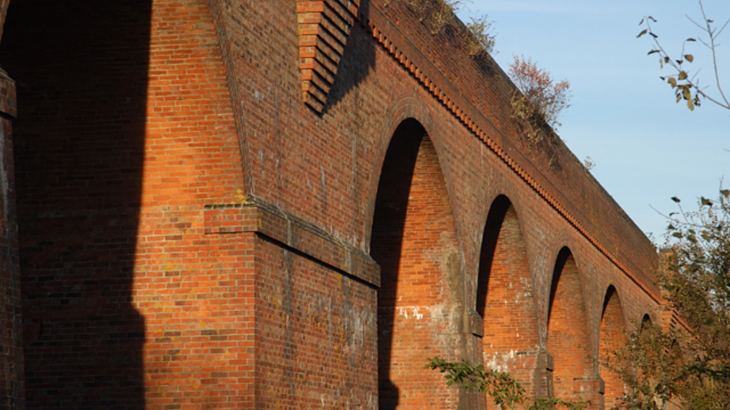
Hockley Viaduct, Winchester. Credit: Dr Simon Newman / CC BY-SA 2.0
Hockley Railway Viaduct, National Route 23, Winchester
Here’s another disused railway viaduct now turned into a glorious monument for you to enjoy while out on the Network.
Built in the 1880s, the Hockley Railway Viaduct opened in 1891 and was last used as a rail line in 1966.
It is 614 metres long and one of the first modern structures to have a solid concrete core.
Now as part of Route 23, users of the path can travel between Reading and the Isle of Wight across the stunning viaduct.
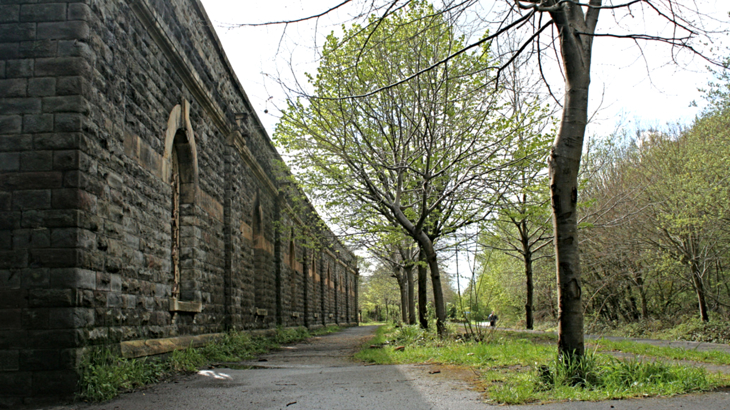
Old Mangotsfield station. Credit: idleformat / CC BY-SA 2.0
Former Mangotsfield 1869 Railway Station, National Route 4, near Bristol
Some more railway history to explore this time in South Gloucestershire, just outside Bristol. The Mangots Railway Station opened in 1845 but had difficulties, so moved to a new site soon after which eventually closed in 1966.
The remaining walls of the Mangots Railway Station date back to 1883 and sit along the Bristol & Bath Railway Path. The station fell into disrepair after the railway’s closure and was partly demolished.
The railway became Sustrans’ first cycle path opening in 1979 making it the oldest route of the National Cycle Network. The Station today has become a popular place to rest along the route.
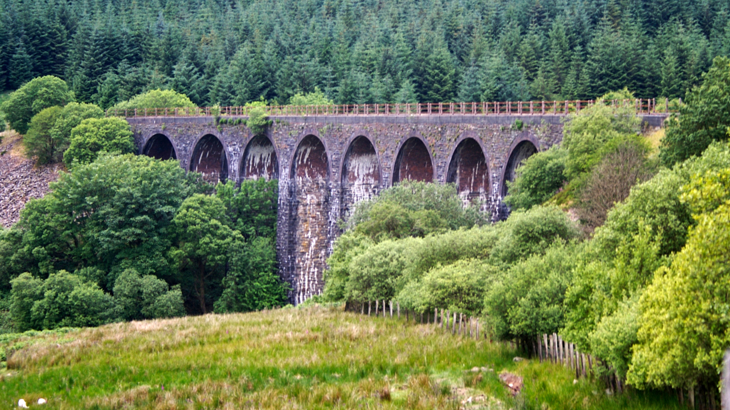
Blaen-y-Cwm Viaduct. Credit: Richard Leonard / CC BY-SA 2.0
Blaen-y-Cwm Viaduct (Nine Arches), National Route 46, near Tredegar, Wales
The beautiful Blaen-y-Cwm Viaduct was built in 1862. Comprising of nine arches, it was formerly used as part of the Merthyr Tredegar & Abergavenny Railway.
The structure was given Grade II Listed status in 1952 and was reopened to the public as part of the National Cycle Network’s Route 46 in 2008.
Outside of the stunning Blaen-y-Cwm Viaduct, Route 46 continues as the Clydach Gorge path through gorgeous Welsh countryside and includes the Droitwich Canal.
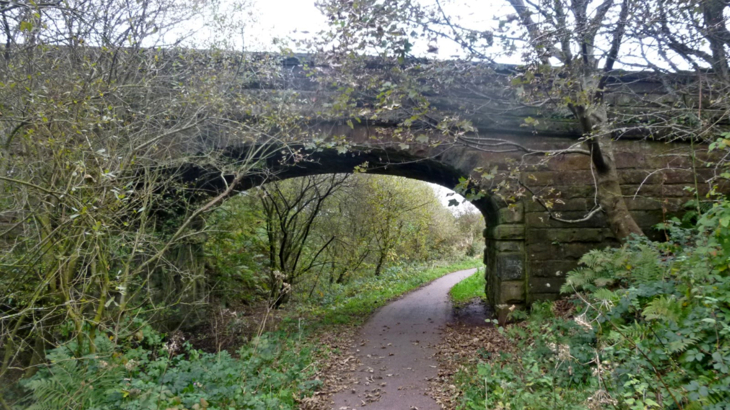
A bridge on part of the former Cleator Moor Railway, Cumbria.
Abutments and bridges, National Route 72, West Cumbria
Along National Cycle Network Route 72, otherwise known as Hadrian’s Cycleway, you don’t have to go far until you stumble upon some history!
So it may be easy to overlook the walls, abutments, and bridges on the path close to the coast (right by our popular C2C cycle path) in West Cumbria.
These structures owned by Sustrans date back to the 1880s and actually formed part of the Cleator Moor Railway.
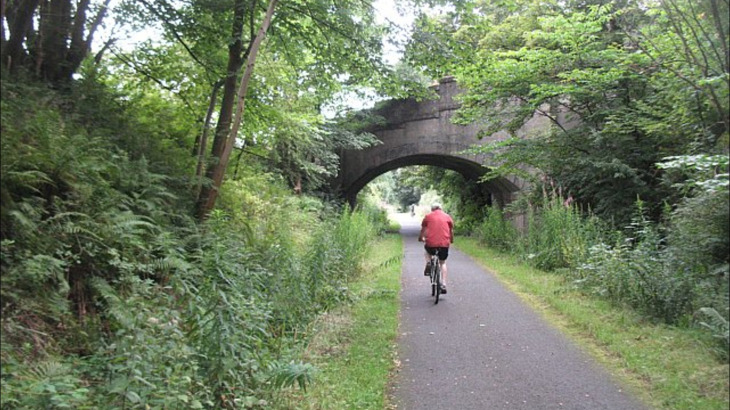
Credit: Richard Webb / National Cycle Route 7, Castle Semple / CC BY-SA 2.0
Castle Semple Bridge, National Route 7, Renfrewshire, Scotland
National Cycle Network’s Route 7 is a stunning 540-mile route that passes through two National Parks.
Along the route west of Glasgow, you’ll find the beautiful Castle Semple Bridge which dates back to 1905.
Formerly part of the Dalry and North Johnston railway line, it closed in the 1960s. It is part of the Castle Semple Estate which began in 1727, with the (now derelict) Castle Semple House nearby.
Keep an eye out as you go along the route nearby, as you’ll also find the Bridge of Weir Railway from 1865.
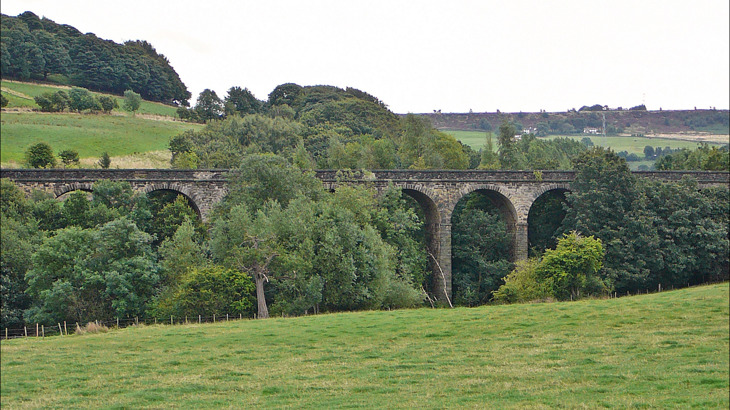
West Vale Viaduct. Credit: Tim Green / CC BY-SA 2.0
West Vale Viaduct, National Route 66, near Halifax
Built in 1875, the West Vale Viaduct is one of many interesting structures around Halifax.
The viaduct was once used by the Lancashire and Yorkshire Railway, which closed in 1959. Now a Grade II listed structure, it forms part of the National Cycle Network’s Route 66.
Continue east towards Bradford to see even more interesting bridges and walls.
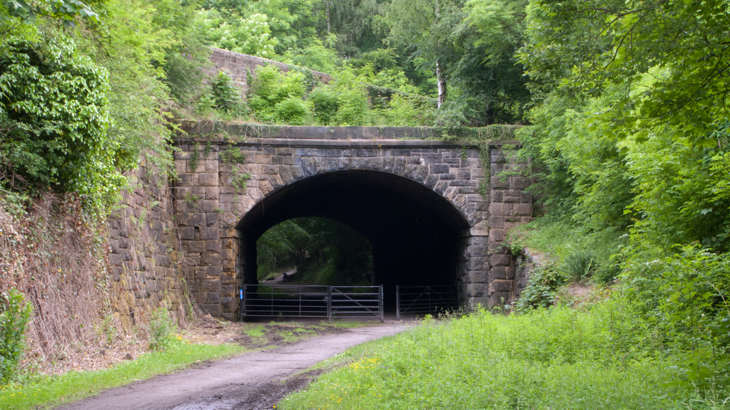
Eastern portal of an old railway tunnel at Beamish. Credit: Trevor Littlewood / CC BY-SA 2.0
Beamish Tunnels, National Route 7, south of Gateshead
Back to Route 7, this time further south near Newcastle, you can find the stunning Beamish Tunnels.
Forming part of the Stanhope and Tyne Railway they were built in 1893 and are a wonderful feat of engineering for the time.
The railway track closed sometime in the 1980s but even today you can still find iron ore pellets dropped by the trains.
Continuing along the route you’ll also see some lovely overbridges that also formed part of the railway and were possibly part of the ‘Beamish Deviation’ which opened in 1893.







